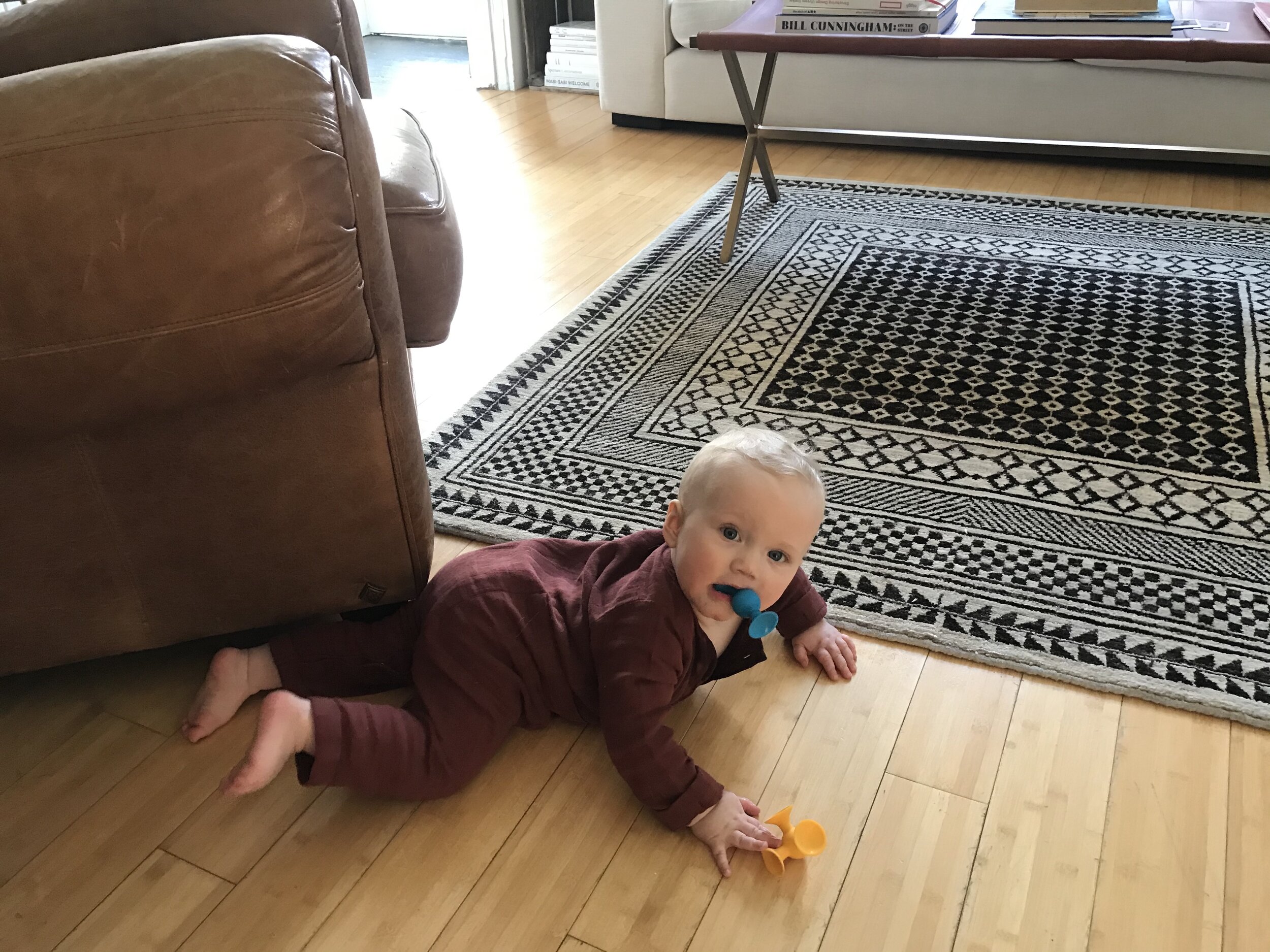Tummy time tips and tricks
I’m sure you’ve heard by now that all babies need tummy time. Lots of it, frequently, and early on. The benefits of tummy time are well-established and wide reaching. Playing on the belly gives baby a chance to work on lifting their head up, pushing up through their arms and building strength in their shoulders and chest. It helps them learn to crawl, roll, and helps avoid conditions such as torticollis and plagiocephaly (flat head syndrome).
When do I start tummy time with my baby?
We recommend starting tummy time as soon as baby is born! You can start laying baby’s tummy on your chest as you snuggle, because being in the prone position (lying on tummy) provides important sensory input and supports breathing as well.
As baby gets older, they will be ready to increase the challenge to work on tummy time skills on the floor, in their crib, or on your lap. You can also hold them in prone as you walk around to get some vestibular/movement input as well as building strength in the core and neck.
As they continue to get stronger and bigger, they will start working on being mobile on their belly by pivoting, rolling, and eventually crawling. Tummy time has been shown to be good for cognitive and visual development as well. It’s safe to say, it’s a crucial aspect of infant development in soooo many ways.
All babies need and deserve tummy time, no matter what!
Did you know that I start doing tummy time with babies right away, even in the NICU?! Even if baby is intubated, fragile, and tiny, they still need and benefit from tummy time! A phrase commonly heard in the NICU is “Face Down, Sats Up!” which means tummy time helps increase saturations (indicating baby is more medically stable).
If your baby has special medical needs, such as a G tube for feeding or a tracheostomy tube for breathing, there are special considerations for tummy time, but it is just as important for them to get in their time! Use positioners, equipment, and seek a PT’s guidance on best ways to do this safely and effectively.
At work I make these prone wedges for babies with tracheostomies to safely get in their tummy time!
How much tummy time does my baby need?
Now we know how important it is, and we mentioned briefly some of the ways to do it. But how much tummy time does baby need? As a pediatric PT, this has got to be one of the most common questions I get from parents. Depending on your baby’s unique needs and goals, it may change a bit and it also may change over time.
But the basic guideline is this: baby should be doing at least 1 hour of tummy time total (can be broken up into shorter intervals) every day by the time they are 3 months old.
If that seems like a lot, DON’T BE DISCOURAGED! Start slow, build up over time, be consistent, and vary the positions you use. Snuggling on their tummy on your chest counts toward baby’s hour, just like a full workout session on the floor mat does!
Work tummy time into baby’s routine
It can be helpful to work regular tummy time into baby’s daily routine to ensure they get consistent and frequent chances to practice. AFTER nap time and diaper change but BEFORE they eat is often a great time to play on the belly (since the belly isn’t full, and they are clean and well rested!). Since baby is likely taking multiple naps a day this is a good way to make sure that there are several chances to work it out!
If your baby is struggling with tummy time, talk to your pediatrician and consider a PT referral. It is such a crucial activity for baby’s development, and there are always things to do to help your baby succeed. The most important thing is TO NOT GIVE UP! You got this, baby!
TL;DR
Tummy time is important and has many benefits for baby’s development
It is important to start right after birth, and work up slowly as baby builds strength and tolerance
Try tummy time on your chest, over your lap, while carrying baby, or on the floor!
1 hour of tummy time/day is recommended. You can break this up into smaller intervals as needed.
Work tummy time into baby’s routine and be consistent. I recommend after nap time, before baby eats to ensure they get multiple chances to practice and they are well rested, clean, and have an empty belly
Start slow, seek help if needed, and DON’T GIVE UP! You got this, baby!

















